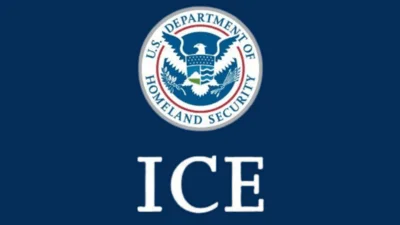More than 40 years of conflict from World War II through the Indochina Wars have left much of Cambodia, Laos, and Vietnam contaminated with landmines, unexploded ordnance (UXO), and other explosive remnants of war (ERW). These explosive hazards still cause injuries and deaths and prevent the safe and productive use of land. To combat this lingering threat, promote increased economic activity, and remediate the effects of U.S. munitions from the Vietnam War, U.S. Conventional Weapons Destruction (CWD) programs in Cambodia, Laos, and Vietnam have contributed more than $665 million since 1993. These funds support ERW remediation efforts, which include survey and clearance operations, information management support, risk education, survivors’ assistance, and national mine action capacity development.
Cambodia
More than three decades of armed conflict have left Cambodia seriously affected by landmines and UXO, and kept poor communities impoverished by limiting their access to farmland. The Khmer Rouge, Royal Cambodian Armed Forces (RCAF), Vietnamese, and Thai militaries laid extensive minefields during the Indochina Wars, Vietnamese occupation, and factional fighting that ended in 1999. Additionally, U.S. air and artillery strikes during the Vietnam War left behind heavy concentrations of UXO in the eastern and northeastern areas of the country along Cambodia’s border with Vietnam. The Cambodian Mine Action and Victim Assistance Authority worked with international partners to develop the National Mine Action Strategy 2018-2025 with the goal of ensuring that “Cambodia is mine free and the threat of explosive remnants of war is minimized, and human and socioeconomic development takes place safely." Cambodia continues to have the right technical tools in place to meet this goal, but declining international contributions could jeopardize it. Despite assistance from the United States and other donors, Cambodia announced in 2020 that casualties from landmines and UXO increased by 35 percent from 2018 to 2019.
From 1993 to 2020, the U.S. government invested more than $167 million for CWD programs in Cambodia to clear mines and UXO, provide risk education, and assist with Cambodia’s destruction of conventional ammunition. In 2020, the United States also marked the 70th anniversary of the U.S.-Cambodia diplomatic relationship. As part of these celebrations, the United States and Cambodia highlighted the importance of UXO survey and clearance to the relationship. In 2020, the Department of State supported the following implementing partners:
* Golden West Humanitarian Foundation (Golden West), in partnership with the RCAF, supported an explosive harvesting system. This project takes the explosive material from excess munitions in Cambodia’s stockpiles and repurposes it for use in the demolition of landmines and UXO discovered by clearance organizations.
* The Halo Trust (HALO ) continued to deploy clearance teams in some of the densest anti-personnel and anti-tank minefields in the K-5 mine belt in northwestern Cambodia.
* Landmine Relief Fund continued to support Cambodia Self Help Demining, an indigenous demining organization, as it conducted clearance and risk education in small villages in northwestern Cambodia.
* Mines Advisory Group (MAG) continued to operate throughout Cambodia, deploying survey and clearance teams and equipment in western Cambodia and cluster munition clearance assets in eastern Cambodia. MAG also continued its partnership with the Department of Defense Humanitarian Demining Research and Development Program (HD R&D) to perform technology testing through survey and clearance in Ratanakiri Province.
* Norwegian People’s Aid (NPA) continued its partnership with the Cambodian Mine Action Center on survey and clearance in eastern Cambodia. NPA also deployed all-female clearance teams in Ratanakiri Province on Cluster Munitions Remnants Survey work.
* Spirit of Soccer delivered a final series of risk education instruction to primary school children by training youth soccer coaches, distributing risk education materials, and holding soccer tournaments to engage local populations. Eighty teachers successfully graduated from the program, which will allow them to continue teaching without further assistance.
With funding from the Department of Defense, HD R&D technologies were used to clear 37.2 million square meters (9,192 acres) of land and 43,790 mines and items of UXO to date. HALO, MAG, and Golden West continued evaluating the Armored Remote-Control Chase Vehicle, Badger tracked excavator, Bearcat vegetation clearance system, Handheld Standoff Mine Detection System, Mini MineWolf tilling system, Nemesis and Rex tools, Piranha minefield area reduction and technical survey skid steer, Rambo demining team support vehicles, Scorpion UXO detection systems, Traxx remote area preparation platforms, the VMX10 UXO detector, and wet soil sifting excavator attachments. HALO began evaluating the Little Storm severe terrain area preparation and clearance system.
U.S. Marine Corps Forces, Pacific (MARFORPAC) partnered with the RCAF to conduct two HMA Train-the-Trainer (TTT) engagements in capacity building. MARFORPAC, in partnership with the Cambodia Mine Action Center, conducted one Pre-Deployment Site Survey, one Phase 1 EOD/Blast Trauma, one Phase II explosive ordnance disposal (EOD)/Blast Trauma, and one Phase III EOD/Blast Trauma HMA TTT engagement.
Laos
Contamination from the Indochina Wars of the 1960s and 1970s left Laos with the world’s highest level of unexploded submunitions. Cluster munitions account for the bulk of UXO contamination in Laos; however, other explosive remnants of war and landmines also contributed to contamination during the wars. Most of the country’s 17 provinces are contaminated with UXO, much of which is of U.S. origin. Population growth and other socioeconomic factors have increased pressure to clear UXO-contaminated land for productive use. In September 2016, the United States committed to invest $90 million over a three-year period. The United States met this commitment in 2019 and has continued to match record-levels of funding with $37.5 million allocated for FY 2020. Additional funds will continue to support the first-ever comprehensive national UXO contamination survey focused on identifying cluster munition strike zones. Ongoing clearance, risk education, and survivors assistance efforts remain at sustained historic levels.
From 1995 to 2020, the United States invested more than $270 million in CWD programs in Laos that supported survey and clearance activities, risk education, survivor assistance, and capacity development. In 2020, the Department of State supported the following implementing partners:
* The Halo Trust (HALO ) deployed 20 teams to support large-scale survey in Savannakhet Province.
* Health Leadership International continued to provide a series of portable ultrasound, trauma care, and medical training for healthcare providers on post-traumatic stress disorder and suicide-prevention. This medical education and training significantly improved diagnostic capabilities and improved the overall competency of district-level medical personnel in UXO-affected districts.
* Tetra Tech partnered with UXO Lao on UXO survey and clearance efforts, and provided managerial and technical support to the National Regulatory Authority, which oversees all UXO-related activity in Laos.
* Mines Advisory Group (MAG) continued to deploy 20 teams to support survey and clearance activities in Xieng Khouang Province.
* Norwegian People’s Aid (NPA) continued its Cluster Munitions Remnants Survey work in Champasak, Sekong, Salavan, and Attapeu Provinces through the deployment of 24 teams.
* Spirit of Soccer finished a project to provide risk education for schoolchildren through soccer activities in Xieng Khouang and Salavan Provinces.
* World Education, Inc. continued to support integrating risk education within the primary-school curriculum and development of a comprehensive case management system for UXO survivors in Xieng Khouang Province. World Education also continued to administer the War Victims Medical Fund, which ensures that victims of UXO incidents, and their families, can receive critical care and long-term support following an accident.
USAID’s Leahy War Victims Fund continued to support World Education, Inc. to improve and sustain the ability of people with disabilities to live and function independently. This assistance has benefitted UXO survivors, survivors of war, and people with disabilities who have mobility limitations.
For further information on U.S.-Laos cooperation, visit; https://2017-2021.state.gov/special-report-u-s-conventional-weapons-destruction-in-laos/index.html
Vietnam
Thirty years of conflict from World War II through the Vietnam War left much of Vietnam contaminated with UXO. The majority of this UXO is concentrated in provinces that adjoin the former Demilitarized Zone, including Quang Tri, Quang Binh, Ha Tinh, and Quang Nam Provinces. Parts of southern Vietnam and the country’s northern border with China also remain contaminated with UXO and some landmines. U.S. support for the Vietnam National Mine Action Center (VNMAC), the Vietnamese government’s lead for issues related to UXO and landmines, continued in 2020 with the provision of a technical advisor, support for the information management unit within VNMAC headquarters, and a technical survey pilot project in Hue Province. Supporting VNMAC’s development will ensure Vietnam maintains the capacity to deal with residual UXO and landmine threats independent of U.S. assistance. The United States continued to fund large-scale survey and clearance work in Quang Tri in support of the provincial government’s goal to become UXO-impact free by 2025. 2020 marked the 25th anniversary of the normalization of diplomatic relations between the United States and Vietnam. U.S. support for UXO survey and clearance continues to be an important pillar of our diplomatic engagement. Public events in 2020 highlighted the role UXO activities have played in improving the health, safety, and livelihoods of Vietnamese living in UXO-contaminated areas.
From 1993 to 2020, the United States invested more than $166 million for CWD programs in Vietnam that cleared mines and UXO, provided MRE and survivor assistance, and supported national capacity development. While UXO remains a threat, no more landmines have been found in those areas where the United States has supported clearance since at least 2012.
In 2020, the Department of State supported the following implementing partners:
* Catholic Relief Services completed its four-year project focused on risk education in primary and secondary schools. As a result of that project, the provincial government decided to include Explosive Ordnance Risk Education Integration Guidelines in the compulsory curriculum for all primary and secondary schools.
* The International Center-Vietnam Veterans of America Foundation (IC-VVAF) finalized its project to develop the capacity of VNMAC and the executive office of the National Mine Action Program to plan, coordinate, and manage the program in Vietnam. The IC-VVAF program helped develop VNMAC leadership of the mine action sector.
* Norwegian People’s Aid (NPA) continued to provide the survey component for a comprehensive survey and clearance project aimed at making Quang Tri safe from known UXO hazards through the deployment of 39 teams.
* NPA continued to support capacity development of VNMAC through provision of a technical advisor and establishment of an information management unit. Additionally, NPA supported VNMAC’s development of technical skills through the adoption of evidenced-based survey procedures through a field pilot in Hue Province. Under this support, NPA trained 30 individuals and non-technical survey was completed in six communes.
* Mines Advisory Group (MAG) continued to provide survey and clearance for a project aimed at making Quang Tri safe from known UXO hazards. Additionally, funding from the United States enabled MAG to lead a consortium with NPA and PeaceTrees Vietnam to conduct survey and clearance operations in Quang Binh Province.
* PeaceTrees Vietnam continued to field EOD response teams and fund clearance operations along the heavily-contaminated Quang Tri provincial border with Laos.
* In celebration of the 25th anniversary of U.S.-Vietnam relations, the Department of State funded two special projects. The first, with PeaceTrees Vietnam in Quang Tri Province, focused on UXO clearance to support provincial social welfare development projects. The second, with NPA in Hue Province, provided a dedicated EOD team to clear the footpaths, historical sites, and monument areas of UXO on Dong Ap Bia or “Hamburger Hill."
With funding from the Department of Defense, HD R&D technologies have been used in the clearance of 5,979 mines and UXO from 1,247,425 square meters (308 acres) of land to date. Five technologies, including a new Scorpion UXO detection system and a new Bearcat vegetation clearance system, continue to be evaluated in partnership with NPA and MAG.
For further information, please contact the Bureau of Political-Military Affairs, Office of Congressional and Public Affairs at PM-CPA@state.gov, and follow the Bureau of Political-Military Affairs on Twitter, @StateDeptPM.
Source: U.S. Department of State, Bureau of East Asian and Pacific Affairs









